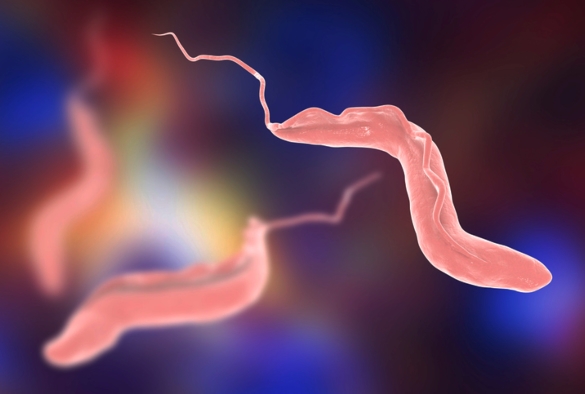University of Liverpool researchers have helped reveal important new insights into how the deadly trypanosome parasite colonizes tsetse flies.
The research, which was led by the Liverpool School of Tropical Medicine and in collaboration with the German University of Würzburg, has been published in Nature Microbiology.
Blood-borne trypanosome parasites are transmitted by tsetse flies and cause potentially fatal disease in humans (trypanosomiasis, also known as sleeping sickness) and livestock (Nagana) in sub-Saharan Africa.
The key step to trypanosome transmission, following ingestion of the parasite-infected mammalian blood, is the establishment of an infection within the gut of the tsetse fly.
The exact location where the parasite ‘hides’ –known as the ectoperitrophic space (ES) – is located between the gut epithelium and the peritrophic matrix (PM). The parasites must multiply within the ES to safely continue through all the development stages before they can migrate to the fly’s salivary glands. Only when they colonise the salivary glands can the parasites be released into the fly saliva, ready to be transmitted when the fly takes its next blood meal.
The authors decided to investigate an overlooked, but fundamental, biological question: how do the parasites reach the ES in the first place, evade the fly’s immune system and impact disease transmission?
To address this question, the team used a combination of state-of-the-art confocal laser scanning microscopy and electron microscopy to visualise trypanosome parasites within the fly gut. These enabled them to obtain striking 3D-images of the precise location of the parasites during the first days of arriving with the blood meal to better understand the dynamics of an early trypanosome invasion within specific tsetse tissues.
The team proved that trypanosomes enter the ES by crossing the newly secreted PM in the proventriculus (PV) – a mushroom-shaped organ that continually synthesises the protective PM to surround the incoming blood meal. This route contrasts with previous beliefs adopted more than forty years ago, and this work now fills an important knowledge gap in trypanosome migration processes in tsetse.
The University of Liverpool co-authors on the paper are Professor Ian Prior, Alison Beckett, Dr Marco Marcello and Ben Middlehurst.
Research reference:
Trypanosoma brucei colonizes the tsetse gut via an immature peritrophic matrix in the proventriculus as published in Nature Microbiology, 20 April 2020.
https://doi.org/10.1038/s41564-020-0707-z
